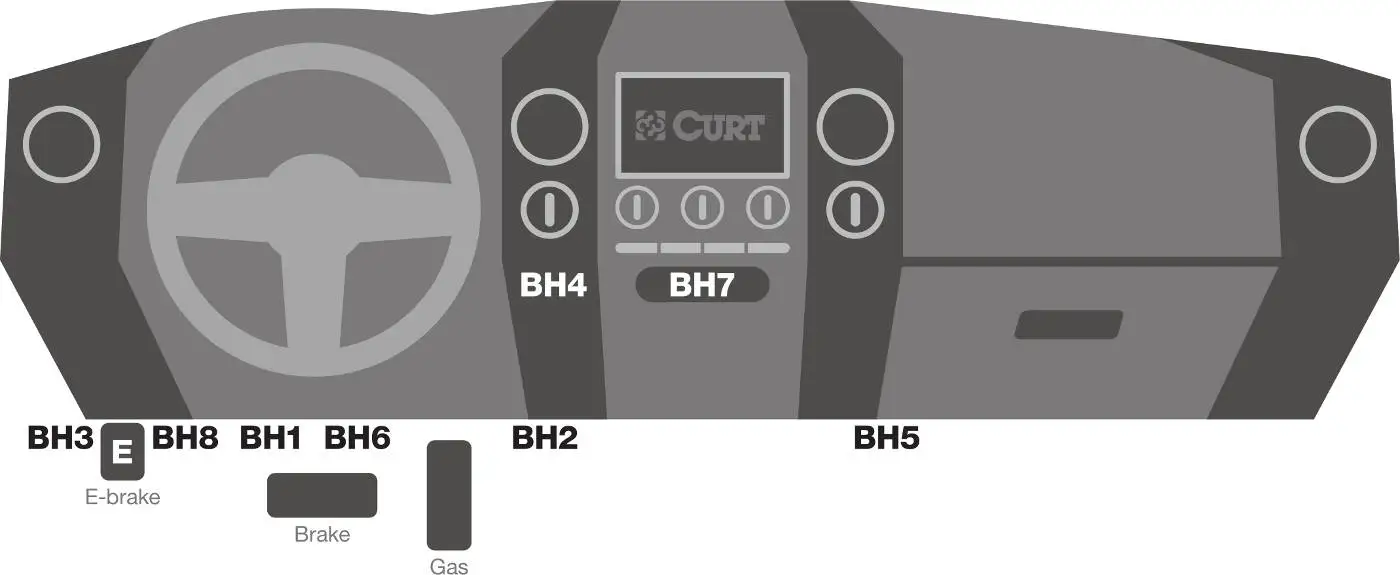How to Install Trailer Brake Controller on 2015 Silverado
Trailer Brake Controller Installation How-To


Trailer Brake Controller Installation How-To
Just 5 Steps to Install Brake Controller and Wiring!
Installing a brake controller involves disconnecting the vehicle battery, mounting the brake controller onto dash and plugging the unit in with a vehicle-specific wiring harness. If your vehicle is not equipped with a plug-and-play harness, you can also splice in wiring for connecting a brake controller.
In this guide, we cover step-by-step how to install a brake controller. Remember to follow the specific instructions included with your unit -- find CURT instructions by part number.
- Disconnect the vehicle's negative battery cable
- Determine where to mount the controller on the dash
- Drill mounting holes for the bracket
- Fasten the brake controller into place
- Plug in the brake controller with a custom wiring harness
How to install a trailer brake controller video
Step 1: Disconnect the negative battery cable
Any time you work on your vehicle's electrical systems, it is a good idea to disconnect the battery. This is true when installing a brake controller as well. Disconnecting the battery helps prevent personal injury and damage to your vehicle's electronics.
For a brake controller install, simply unbolt the negative battery cable and move it off to the side.
Step 2: Determine where to mount the controller
Find a suitable mounting location for the brake controller. On most vehicles, particularly large trucks and SUVs, the best place tends to be below and off to the side of the steering wheel. Here the controller will be easily visible but out of the way. It can also be mounted above the dash.
If you have a CB radio or other RF transmitter, make sure the brake controller is not installed close to these sensitive electronics.
Step 3: Drill mounting holes
With the brake controller positioned in the desired location, use the mounting bracket as a template to mark where you'll need to drill. Then, drill a hole for each of the fasteners included with the bracket.
Be mindful of what you're drilling into!
You don't want to damage vehicle electronics behind the dash. If possible, remove the panel that you're drilling into to avoid unnecessary risks.
Step 4: Fasten the brake controller into place
With the holes drilled, reposition the brake controller bracket and install the fasteners included with the unit. Many brake controllers come with self-tapping screws. When tightening the screws, be careful not to overtighten or strip out the holes.
Next, attach the brake controller to the bracket using the included bolts.
Step 5: Plug in the brake controller
Using a vehicle-specific wiring harness, plug the brake controller into the vehicle. One end of the wiring harness plugs into the vehicle's factory harness under the dash, and the other end plugs into the brake controller.
The location of your vehicle's factory wiring harness may vary. Refer to the diagram below to locate yours.
Brake controller wiring locations


BH1 - Under dash, left of steering column, near emergency brake pedal
BH2 - Under dash, near center console
BH3 - Under dash, in junction box left of steering column
BH4 - Behind storage pocket, above ashtray
BH5 - Under dash, behind center access panel on passenger side
BH6 - Under dash, near brake pedal
BH7 - Behind storage pocket in center of dash
BH8 - Under dash, to right of emergency brake pedal


How to Wire a Brake Controller: Splice-in Option
How to wire in trailer brake controller video
Step 1: Disconnect the vehicle's battery
Start your splice-in brake controller installation by disconnecting the negative battery cable. This will help ensure your safety while working on the wiring system. It will also help protect your vehicle's electrical components from damage.
Disconnect the negative cable, and move it to the side.
Step 2: Locate the brake controller wiring
Even if your vehicle doesn't have a factory connector for plugging in a brake controller, it should have blunt-cut brake controller wiring, if it is compatible with a brake controller. This wiring bundle will be located somewhere underneath the dash.
Carefully separate the bundle of wires and remove any tape holding the wires together.
Step 3: Determine wiring connections
Strip the vehicle-side wires as needed and separate them out to prepare for splicing in the brake controller harness.
Note the following wire functions:
- Blue - Brake output to trailer
- Red - 12+ volt
- White - Ground
- White with blue stripe - Stop lights
Step 4: Splice color-coded wires together
Strip the wires on the brake controller harness if needed (#51515). Then, attach butt connectors. Splice the wires from the vehicle to the brake controller harness, matching the colors as follows:
- Blue vehicle wire to blue brake controller wire
- Red 12+ volt vehicle wire to black brake controller wire
- White vehicle wire to white brake controller wire
- White with blue stripe vehicle wire to red brake controller wire
Step 5: Insert the quick plug and mount the brake controller
With the wires securely crimped together, you can now plug the brake controller harness into your brake controller unit.
Find a suitable mounting location for the brake controller and install it with the included bracket and other hardware. Make sure the brake controller is easily visible while driving but not obstructing your view of the road or other controls.
Step 6: Attach power wire to the battery
The final step is to supply power to your brake controller unit. This is done using a factory power feed wire already installed on the vehicle.
Locate the power feed wire under the hood, near the fuse box, and attach it to the auxiliary power terminal on your vehicle's fuse box.
Finally, reconnect the negative battery cable.
Back to Brake Controller Wiring & Brackets
How to Install Trailer Brake Controller on 2015 Silverado
Source: https://www.curtmfg.com/towing-electrical/brake-controls/wiring-brackets/learn-more